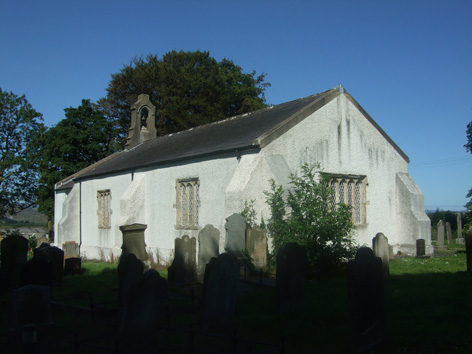
St John’s Church, Islandmagee
St John’s Church, Islandmagee, belongs to the Church of Ireland. Though known as the ‘New Church’, St John’s is one of the oldest places of worship in East Antrim still in regular use.
The early history of the church
It is difficult to accurately date the construction of this church. Its architecture suggests late sixteenth century and the traditional date of construction is 1595, but there is no historical evidence to support this. St John’s may stand on the site of an even older church. Renovations to the church in the 1820s, uncovered the foundations of an older and larger building.
In 1644, the Solemn League and Covenant was administered on Islandmagee, probably at this church. For some time after this it was used by Presbyterians. In the late 1650s, William Mills (or Milne) ministered for the Church of Ireland in Islandmagee. However, as nearly all of its inhabitants were Presbyterians, he found himself without a congregation.
An intriguing inscription from the churchyard infers that the Rev. James Dunbar, a Presbyterian minister at Islandmagee from 1758 until his death in 1766, is buried inside the church building. This raises the issue of whether the church was actually in use at this time.
The church since the early nineteenth century
The Ordnance Survey Memoir of the parish tells us that prior to 1828, the church measured 88 feet by 28 feet (27 metres by 8.5 metres), with an aisle or transept attached to the west end of the north side. In that year the aisle and 28 feet (8.5 metres) of the main body of the church were removed and a new roof was installed. At this time, the average attendance in winter was 20-30 and in summer 30-50. The church now measures 18 metres by 9 metres externally and can accommodate around 100 worshippers.
There have been relatively few changes to the church since 1840. Extensive repairs to the roof were carried out in 1985 and in 1988 an extension was added to the west end of the building to contain a vestry and Sunday School room. Further works were carried out in 2002, including the replacement of window lintels, re-pointing of walls, and lifting of the floor.
The church contains seventeenth-century Irish church furniture in the form of sanctuary chairs from Mullingar. The prayer desk was constructed from black oak panelling from the former bishop’s palace in Clonfert, County Galway. The communion table and reredos are also made from older pieces of panelling. The present bell was cast in 1796 and originally belonged to Ballyclough Church in County Cork which closed in 1974. It replaced a bell that had been donated to the church by Major Hill in 1932, and which now hangs on the south wall inside the church. It had been ‘liberated’ from the Governor’s Palace in Dar es Salaam by his father in 1917.
The churchyard
The churchyard has a large number of headstones, most of which are in good condition. The earliest date of death on any gravestone is 1752. Given that both of the other old graveyards in Islandmagee have memorials dating from the seventeenth century, it is possible that the practice of burying in this churchyard did not start until the middle of the eighteenth century.
Maritime associations
All of the burial grounds in Islandmagee contain a very high proportion of gravestones with maritime associations. James Campbell and William Johnston were both washed overboard, the former off the Cape of Good Hope in 1867, and the latter from the schooner G. F. Williams in 1876.
Others perished as a result of illness. Robert Thomas Nelson died of fever on the passage from Charlestown to Liverpool in 1834, aged 19. Margaret Ross drowned by the capsizing of the barque Alice M. Craig in 1893.
Clergy memorials
By the end of the nineteenth century there were four churches in Island Magee: the Church of Ireland church, First Islandmagee Presbyterian church, Second Islandmagee Presbyterian church, and the Methodist church. Several gravestones commemorate clergymen who ministered in the parish or members of their families.

